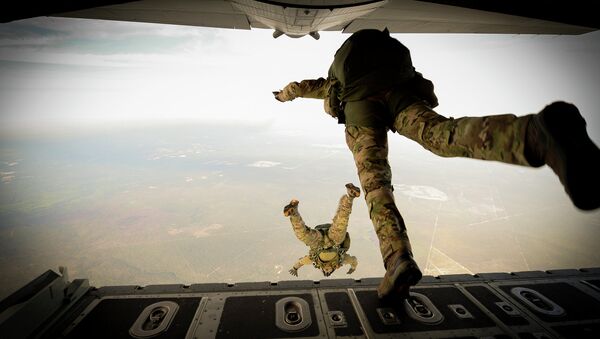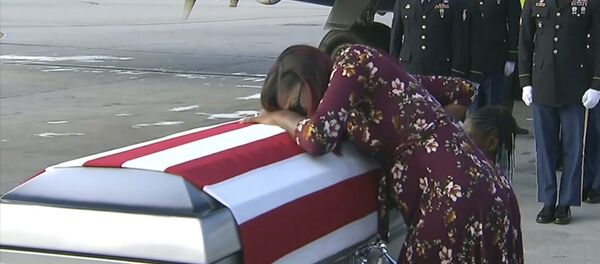US Africa Command (AFRICOM) leader and Marine Gen. Thomas Waldhauser told Congress on Tuesday that the roughly 800 US soldiers deployed in Niger are not receiving imminent-danger pay (IDP), despite the West African nation being the site of the deadliest incident for US forces in Africa in a quarter of a century.
The Pentagon rewards soldiers deployed to the most dangerous areas with IDP, an extra $7.50 per day, up to an additional $225 per month. Niger is not considered an imminent danger zone.
"The short answer is 'yes,' we have submitted that request," Waldhauser said in testimony before the House Armed Services Committee. He added that some AFRICOM soldiers, including the roughly 500 troops stationed in the wartorn eastern African nation of Somalia, do get the higher rate of pay, but the Niger-stationed forces do not.
Other imminent danger zones in Africa include Algeria, Burundi, Chad, Democratic Republic of Congo, Djibouti, Egypt, Eritrea, Ethiopia, Ivory Coast, Kenya, Libya, Tunisia and Uganda. US forces in Niger are not authorized to enter situations where enemy action is seen as likely and most of the force is there to operate reconnaissance drones out of the capital city of Niamey.
Waldhauser was also asked about AFRICOM's investigation into the ambush that concluded recently. The general described the investigation as "exhaustive" and "very, very detailed," but did not make any specific comments on the findings, save that he had approved the report to be turned over to Defense Secretary James Mattis.
If Mattis also approves the report, Waldhauser went on to say, AFRICOM will provide a "detailed and comprehensive" briefing of the findings to the families of the killed American soldiers. After that, Congress will receive a version of the report and a redacted version will at last be revealed to the public.
Only then, Waldhauser said, would he testify to Congress about the report's findings.
The October 4 ambush occurred near the village of Tongo Tongo along the Niger-Mali border, about 120 miles from Niamey. Twelve American soldiers and 30 Nigerien troops were returning from an unsuccessful hunt for Islamic militant leader Doundou Chefou, believed to be active in that area when they were attacked by a local Daesh offshoot, the so-called Islamic State in the Greater Sahara (ISGS).
The ISGS militants took the US-Niger force by surprise, opening fire on them with machine guns and destroying their vehicles with rocket-propelled grenades. The battle ended two hours later when French air support stationed in Mali arrived, sending the militants into retreat.
In February, the New York Times retrieved a preliminary version of AFRICOM's report that claimed that someone in the command structure ordered the US troops into the high-risk hunt for Chefou. The most recent report, according to the Associated Press, instead claims that the US troops unilaterally decided to pursue Chefou without senior oversight or approval.
On Monday, a Daesh propaganda video surfaced online that included gruesome head cam footage from one of the four slain US soldiers that showed several of the troops being gunned down.
The Pentagon and AFRICOM requested that media outlets not post or link to the video. "The release of these materials demonstrates the depravity of the enemy we are fighting," AFRICOM wrote in a Monday statement.
"We encourage the news media to deny [Daesh] a propaganda success by not purchasing, showing or bringing undue attention to these images as it re-victimizes the affected families, amplifies IS atrocities and aids in their recruiting."








